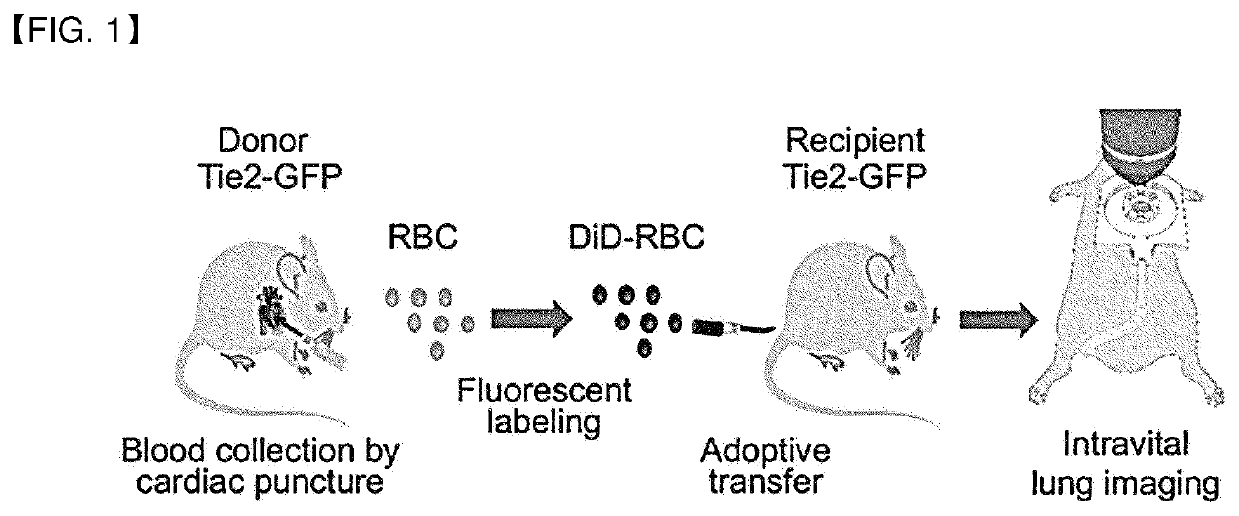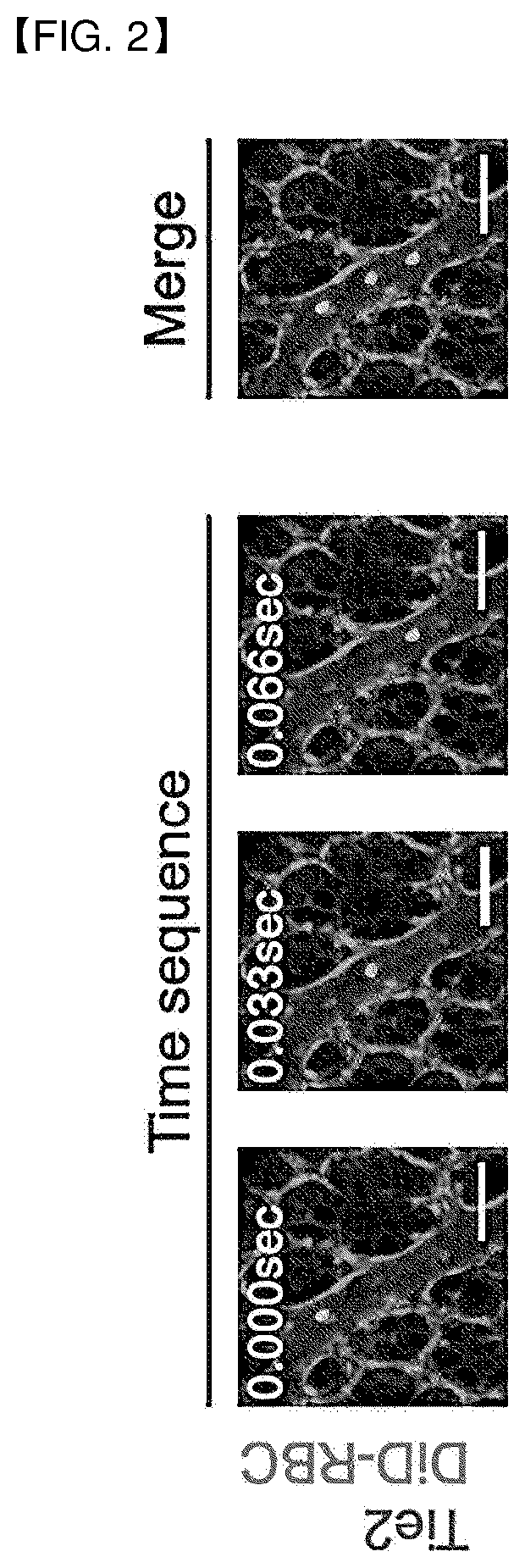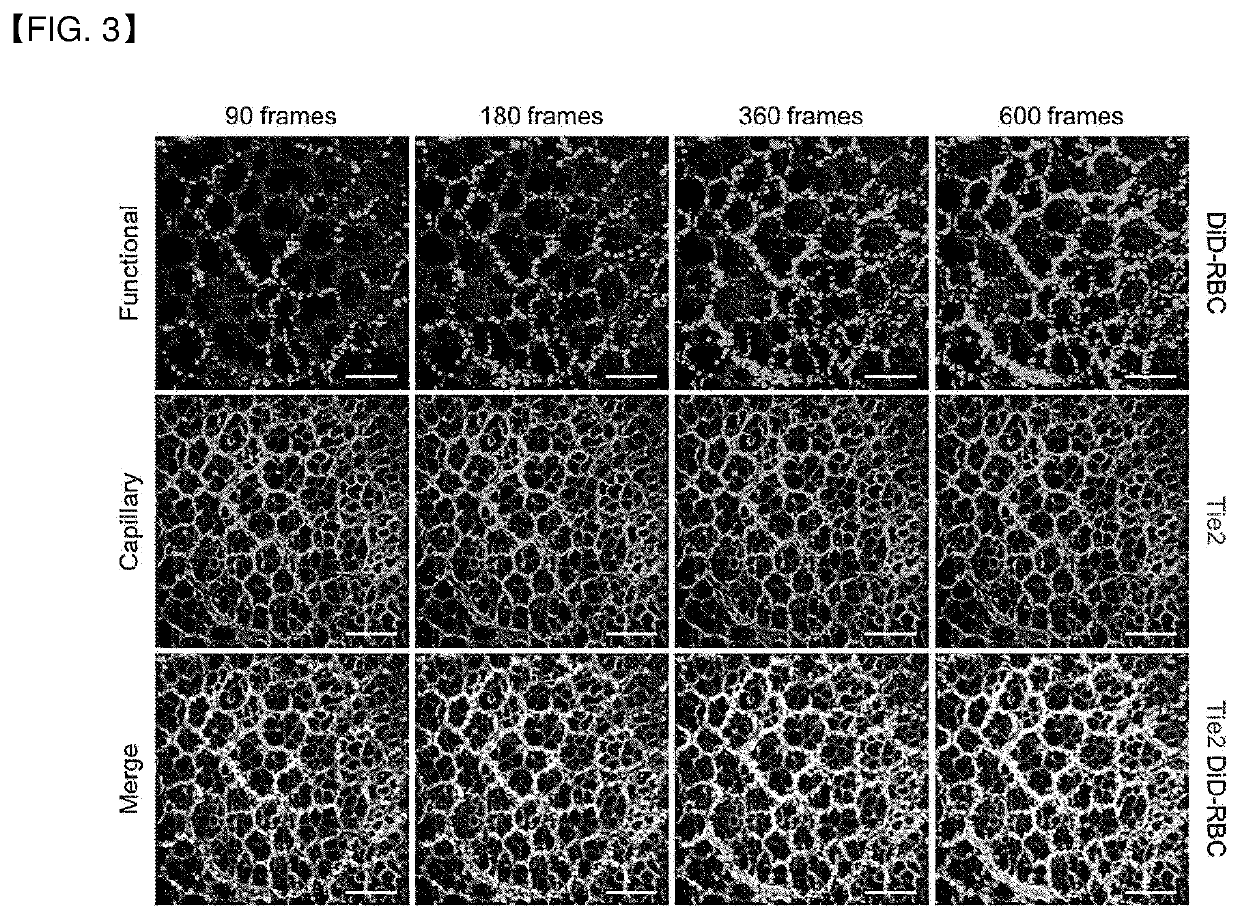Method and apparatus for quantitation of microcirculation
a microcirculation and quantitation method technology, applied in the field of methods and apparatus for quantitation of microcirculation, can solve the problems of limited measurement method of functional capillary density, limitation of density calculation, and difference in functionality, so as to achieve more accurate and rapid diagnosis, easy to quantify, convenient and accurate
- Summary
- Abstract
- Description
- Claims
- Application Information
AI Technical Summary
Benefits of technology
Problems solved by technology
Method used
Image
Examples
example 1-1
[Example 1-1] Preparation of Mouse Model for Quantitation of Microcirculation
[0192]For quantification of microcirculation, a sepsis-induced acute lung injury mouse model was prepared as follows.
[0193]All mice used in the examples were individually housed in ventilated and temperature (22.5° C.- and humidity (52.5%)-controlled cages under 12:12h light:dark cycle and were provided with standard diet and water ad libitum. 8- to 20-weeks-old male mouse (20-30 g) were used for the experiment. C57BL / 6N mice were purchased from OrientBio (Suwon, Korea) and Tie2-GFP mice (Stock No. 003658, Jackson Laboratory) where GFP is expressed under an endothelium-specific Tie2 promoter were purchased from Jackson Laboratory.
[0194]To generate a sepsis-induced acute lung injury (ALI) mouse model, high-dose LPS was administered to the Tie2-GFP mice (hereinafter, Tie2-GFP-ALI mouse model).
[0195]For the high-dose LPS model, LPS (10 mg / kg, E. coli serotype 055:B5, L2880, Sigma-Aldrich) was intraperitoneally...
example 1-2
[Example 1-2] Preparation of Mouse Model for Diagnosis of Microcirculatory Disorder
[0196]For diagnosis of microcirculatory disorder, a sepsis-induced acute lung injury mouse model was prepared in the same manner as in Example 1-1.
[0197]But, all the mice used in this example were LysMGFP / + mice, rather than Tie2-GFP mice, provided by Professor Minsu Kim at University of Rochester (hereinafter, referred to as LysMGFP / + mouse model).
[0198]To generate a sepsis-induced acute lung injury (ALI) mouse model, high-dose LPS was administered to the LysMGFP / + mice.
[0199]For the high-dose LPS model, LPS (10 mg / kg, E. coli serotype 055:B5, L2880, Sigma-Aldrich) was intraperitoneally administered to the peritoneum of the LysMGFP / + mice 3-6 hours before capillary imaging (hereinafter, referred to as ALI mouse models; LPS 3h mouse model: 3 hours after administration of LPS, LPS 6h mouse model: 6 hours after administration of LPS). As a control group, the same amount of PBS was injected into the peri...
PUM
 Login to View More
Login to View More Abstract
Description
Claims
Application Information
 Login to View More
Login to View More - R&D
- Intellectual Property
- Life Sciences
- Materials
- Tech Scout
- Unparalleled Data Quality
- Higher Quality Content
- 60% Fewer Hallucinations
Browse by: Latest US Patents, China's latest patents, Technical Efficacy Thesaurus, Application Domain, Technology Topic, Popular Technical Reports.
© 2025 PatSnap. All rights reserved.Legal|Privacy policy|Modern Slavery Act Transparency Statement|Sitemap|About US| Contact US: help@patsnap.com



